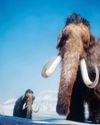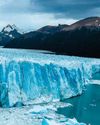ANIMALS ON THE BRINK
How It Works UK
|Issue 190
Meet some of the most critically endangered animals from around the world and discover why they're on the brink of extinction

At present, there are more than 44,000 species around the world that are facing the possibility of extinction. Keeping a watchful eye over them is the International Union for Conservation of Nature (IUCN), composed of governments and civil society organisations. Since 1964, the IUCN has compiled the Red List of Threatened Species, a comprehensive guide to the state of nature and the likelihood of plant and animal extinction. From ‘least concern’ to ‘extinct’, each species that’s assessed by the IUCN is placed on the scale to indicate their conservation status.
For example, to be categorised as ‘critically endangered’ a species needs to meet specific conditions, such as fewer than 250 mature individuals, a population reduction of 70 per cent or more in the past ten years or a population that continues to decline by 25 per cent or more over three years. This informative tool not only lists species’ status in the world, but also acts as a reference for many different agencies and organisations to enact policy changes and protections in the hopes of protecting wildlife.
The IUCN list is filled with 157,100 species, of which 28 per cent are ‘threatened with extinction’. The IUCN aims to assess a further 160,000 species and transform the IUCN Red List into a ‘barometer of life’. Here are just some of the many critically endangered animals that are facing extinction.
DUSKY GOPHER FROG (RANA SEVOSA)
Population: Around 500
Threats: Habitat loss
Location:
このストーリーは、How It Works UK の Issue 190 版からのものです。
Magzter GOLD を購読すると、厳選された何千ものプレミアム記事や、10,000 以上の雑誌や新聞にアクセスできます。
すでに購読者ですか? サインイン
How It Works UK からのその他のストーリー
How It Works UK
20 WEARABLE HEALTH TRACKERS
Whether you strap a wellness coach to your wrist or weave subtle sensors into your clothes, these devices are revolutionising how we track our health
9 mins
Issue 210
How It Works UK
SUPERPOWERED PLANTS
The world of plants is vibrant and diverse, just like this book.
1 min
Issue 210
How It Works UK
SECRET STORIES OF LOST BEASTS
We're all aware of the mighty dinosaurs that once roamed Earth, but there are so many weird and wonderful species that have been lost to time.
1 min
Issue 210

How It Works UK
ALL ABOUT BLIMPS
Is it a bird? Is it a spaceship? No... it's a non-rigid airship
2 mins
Issue 210
How It Works UK
SUPER QUESTERS MISSION: RAINFOREST MAGIC
Join adventurers Leo, Lilli and Bea as they transform into superheroes and journey to the rainforest in the pursuit of knowledge.
1 min
Issue 210

How It Works UK
HOW THE MIGHTY MAMMOTH RULED THE ICE AGE
Meet the prehistoric giants that roamed the Arctic Circle thousands of years ago
4 mins
Issue 210
How It Works UK
Have they found LIFE ON MARS?
Although it's by no means certain, scientists are slowly accumulating evidence that life once existed on the Red Planet
2 mins
Issue 210

How It Works UK
HOW FAST DO GLACIERS MOVE?
The speed at which a glacier flows depends on its mass, the depth and slope of the underlying rock bed and friction.
1 min
Issue 210

How It Works UK
HOW IN-FLIGHT WI-FI WORKS
This technology allows you to scroll to your heart's content while killing time at cruise altitude
3 mins
Issue 210

How It Works UK
HOW WIGWAMS WERE BUILT
Discover the construction and living conditions inside these traditional domed dwellings
1 mins
Issue 210
Listen
Translate
Change font size

